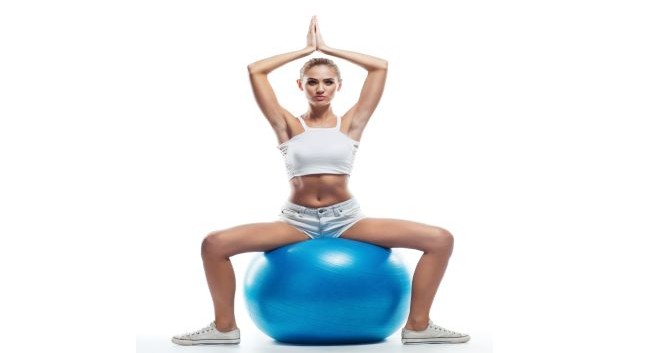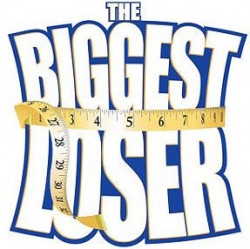The Resolution Solution: 7 Goals You Can Meet This Year
How to Set Goals You Can Meet
It's that time of year again. Time to vow that you'll never miss another workout, always eat healthy, save a mountain of money, and lose every single pound you've gained since you were 15. In other words, it's time to make gigantic, far-reaching resolutions that you suspect (and rightly so) are destined to fail, just as they did last year, and the year before that.
Here's a better way: Ease into 2011 with a reality check. "The smaller and more exact the actions involved in achieving your resolutions, the greater the chance that you will actually see them through and reach the goal," says Keri Gans, RD, author of the forthcoming book The Small Change Diet. Your path to better health starts with these seven easy changes that you can truly achieve. Let's ring in a happy new you!
I resolve to...dress for fitness success.
Maybe Stacy and Clinton are on to something on their show What Not to Wear when they tell bedraggled, sweats-clad ragamuffins that they'll feel better about themselves once they step up their style. "Wearing clothes that you feel good in can boost your body image, simply because you like your new look," says psychologist and fitness instructor Elizabeth Lombardo, PhD, author of A Happy You: Your Ultimate Prescription for Happiness. Despite what you may think, covering up the parts you're trying to whittle down isn't doing your self-esteem any favors. "Baggy clothes can actually perpetuate low body image," Lombardo adds. So kick-start your motivation with retail therapy. You'll be in style — and in the mood to work out — in figure-flattering black yoga pants, a bright fitted tank or tee, and a cute patterned headband.
Get the Look: Cute Workout Clothes for Every Body Type
I resolve to...eat more fish.
Trade chicken for fish that's rich in heart-healthy omega-3 fatty acids, such as salmon, tuna, or mackerel, two nights a week. Researchers at Brigham and Women's Hospital and Harvard Medical School in Boston found that eating just one to two 3-ounce servings of fatty fish weekly can reduce the risk of dying from heart disease by 36 percent.
For a hassle-free fillet, try this technique from food writer and cook Mark Bittman, author of The Food Matters Cookbook. Place a 4-ounce fillet in the center of a rectangular piece of aluminum foil (about 12 by 18 inches). Sprinkle it with one teaspoon each of sesame oil and soy sauce, then fold the foil to seal the fish inside, leaving some room in the packet for air to circulate. Place the packet in a baking dish and cook at 450 degrees for about 20 minutes.
Recipes to try:
Ancho-Glazed Salmon & Sweet Potato Fries
Sauteed Baja Fish
Grilled Halibut with Papaya-Citrus Slaw
I resolve to...try kettlebells.
Maybe you missed the issue in which we showed you how to use those weird-looking weights with handles, but kettlebells are worth getting acquainted with on a weekly basis. John Porcari, PhD, an exercise researcher at the University of Wisconsin-La Crosse and FITNESS advisory board member, recently put these tools to the test in his exercise lab and discovered that people who did an intense 20-minute workout with kettlebells burned, on average, an astounding 400 calories, or 20 calories a minute. "That's equivalent to running a mile at a six-minute pace," says Porcari, who believes that the megaburn occurs because kettlebells combine cardio and strength training and use several muscle groups at once.
Get started with a single-arm swing: Stand with your hands at your sides, feet shoulder-width apart, with an eight- to 15-pound kettlebell on the floor between your feet. Hinge forward from your hips as you lower into a squat and grasp the kettlebell with your right hand. Drive quickly through your heels to straighten your legs, swinging the kettlebell in an arc to chest level in front of you, right arm extended. Immediately return to a squat position, swinging the kettlebell in a controlled manner through your legs behind you. Switch hands so you are grasping the kettlebell with your left hand. Continue the previous sequence to complete one rep. Squat and swing for six to 10 reps. (Increase the reps and the weight of the kettlebells as you get stronger.)
Kettlebell workouts to try:
37-Minute Basic Kettlebell Routine
Express Workout: Beginner-Friendly Kettlebell Moves
I resolve to...take a 30-second time-out.
To lower your blood pressure, stress levels, and risk for heart disease, you could take up kickboxing, make over your diet, and start training for your first half-marathon. Or you could simply learn to breathe better by meditating. When you're stressed, your body produces the hormone cortisol, which raises heart rate, blood pressure, blood sugar, and muscle tension as part of a temporary reaction preparing you to tackle whatever it is that's stressing you out. Trouble is, the perpetual pressure that most of us feel means that the stuff is coursing through our bodies continuously. But meditation induces physiological changes in your body, telling it to calm down and stop churning out cortisol, in turn improving circulation, relaxing muscles, and allowing tension to dissipate. In fact, a study of college students found that those who regularly meditated reduced their long-term risk of high blood pressure by 52 percent.
You don't have to get all Eat Pray Love to reap the benefits of meditation. While many experts recommend 20 to 30 minutes a day, even a mini session will help when you're feeling overwhelmed, says psychologist Alice D. Domar, PhD, director of the Domar Center for Mind/Body Health in Boston. Simply take a deep breath in through your nose (so deep that both your chest and your abdomen expand), slowly counting to four as you inhale. Pause for a few seconds, then exhale through your mouth, slowly counting backward from four to one. Repeat this a few times, then return to what you were doing. "This breathing exercise can make you feel better in 30 seconds," Domar says. Plus, it teaches your body a better way to respond to high-pressure situations so stress can take less of a toll in the future.
More ways to de-stress:
2-Second Tension Tamers
Stress-Busting Snacks
11 Simple Ways to Chill Out
I resolve to...spend a minute a day doing the plank.
Your core muscles — those in the neighborhood of your back, belly, hips, and pelvis — provide stability and balance for your entire body. Having a strong core makes it easier and safer to do just about everything, from lifting a toddler to skiing moguls. Ignore your core and you're setting yourself up for back pain, neck pain, and poor posture as well as accidental trips and slips. Fortunately, one simple move once a day is all you need. "During a plank, the core muscles all work in harmony to protect your spine," says FITNESS advisory board member Michele Olson, PhD, professor of exercise science at the Human Performance Laboratory at Auburn University Montgomery in Alabama.
The best time to rock the plank is at the end of your workout. "It forces your abdominal muscles to kick in when you're getting tired, which is the time you need core stability the most," Olson says. Even if you think you're a pro, follow these steps to fine-tune your form: (1) Start by lying facedown with your elbows directly under your shoulders and your forearms and palms flat on the floor. (2) Tighten your abs, press your forearms into the floor and squeeze your glutes as you pop up onto your toes, forming a straight line from your head to your feet. (3) Don't let your glutes stick up or sag — and don't forget to breathe — as you hold this position for up to a minute.
Make your plank a little harder:
Plank with a Twist
The Cha-Cha-Cha
Plank Twist to Dog Split
I resolve to...go to bed angry.
You and your guy just had a major argument. Dr. Phil might say it's healthy to get your feelings off your chest before you turn in for the night, but research suggests that's a myth. "It's like using gasoline to put out a fire. Venting only feeds angry feelings and aggressive impulses," explains Brad J. Bushman, PhD, a professor of communications and psychology at Ohio State University in Columbus.
In one of his studies, 600 students were showered with insults (by an accomplice to the study); then researchers tracked the subjects' feelings while they did one of three things: thought about their provoker while hitting a punching bag, thought about becoming fit while hitting a punching bag, or sat quietly for three minutes. The punchers who focused their attention on their provoker reported the most feelings of anger and behaved the most aggressively; meanwhile, those who did nothing experienced the fewest feelings of hostility.
Instead of using your partner as a verbal punching bag after a frustrating argument, give yourself time to calm down. Do something relaxing instead, like counting to 10 while taking deep breaths or snuggling with your dog, Bushman recommends. Once you've cooled off, try solving the problem with a calm heart-to-heart conversation. Even if it means waiting until the morning, it's better than a screeching late-night argument.
I resolve to...learn to take a compliment.
Too many women swat away compliments by rejecting or disagreeing with them ("This old thing? I got it on sale!" or "You like my hair today? I didn't even wash it!"). But dismissing kind words can gradually chip away at your self-esteem, making it harder for you to face challenges, says psychologist Ellen Langer, PhD, professor of psychology at Harvard. Accepting accolades, on the other hand, may boost your confidence, giving you the guts to tackle just about anything, whether it's a job interview or even a marathon.
When someone compliments you, assume that it's sincere unless you have ample evidence to the contrary, and take a second to think about it. "If you reflect on why it may be true, you bring to mind positive aspects of who you are, which will help build your confidence," Langer says. Then simply say thank you and enjoy the moment. P.S.: Get ready for many more compliments in 2011, now that you're fitter, happier, and healthier than ever.
Real-Life Resolutions from Our Readers
Read five pages a day. "My resolution was to finish at least five pages of a motivational book a day. I've kept it for two years, and my self-esteem has improved dramatically. Now I love who I am and the potential that I have to be and do anything I want."
— Miriam Vasquez, 37, El Cajon, California
Cut back on booze. "Five years ago I examined the financial cost of my social drinking and made a list of what I could buy or the places I could go with that money instead. As a bonus of drinking less alcohol, I've lost weight, too."
— Andrea Meissner Robinson, 42, Atlanta
Step on the scale. "Every year I resolve not to weigh more on the last day of the year than I did on the first day of the year. It keeps me watchful, and I've maintained a 70-pound weight loss for five years now."
— Martha Durant Hennessy, 52, Mobile, Alabama
Pick up the pace. "I used to walk a lot. This year I resolved to start running and to complete a 5K; before I knew it, I was running more than walking. I recently completed my third 5K, and I just signed up for a five-mile race."
— Marcie Jannetti, 35, Lakewood, New Jersey
-
Weight Loss Tip #49 – Maintain a chart to keep your weight loss in check
-
Importance Of Diet Plan For Weight Loss And Healthy Living
Importance of Diet Plan for Weight Loss and Healthy Living People of
-
Walk Your Weight Off!
Walking for fitness, for health and even for weight loss is actually
-
Weight Loss Tip #26 – Eat almonds to lose weight
-
A Proper Diet That Is Filled With Healthy Fats Can Help You Lose Weight
Have you struggled to lose weight in the past? Do you feel like youll
-
How to Lose 10 Pounds in 2 Weeks
Great. You have a special event coming up that you need to look stunn
- DON'T MISS
- 5 Things That Happened When I Tried To Walk 20,000 Steps A Day
- How to Burn Belly Fat Fast
- 4 Ways to #MakeFitHappen—Every Day
- The Surefire Way to Find the Perfect Weight Loss Program For Yourself.
- How to Get Back Dimples
- How To Get Results With Diet Plans With Expert Weight Loss Tips: The Truth Behind Real Dieting Succe
- See The Pounds Fall Right Off With These Weight Loss Tips
- Celebrity Nutritionist Kimberly Snyder’s Recipe For Optimal Weight Loss
- What I told a Buddy Looking to Lose Some Weight
- How to Make Healthy Pizza




